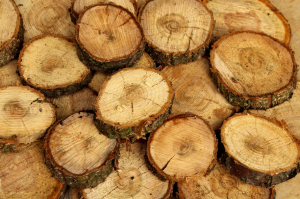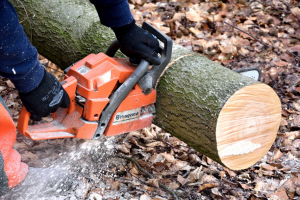
If you are into a home project, perhaps you’ve noticed how different one floor can be from another. Not just in level or color, but in the way the grain seems to run through the wood. If so, it is because of the wood cuts. Generally, cutting wood with an electric chainsaw is common knowledge, but cutting wood has no specific standards, making it apparent that each home may have different appearances. In one house, you may see flat cut wood. Then, you will find rift cut wood in another home. Yet, you also notice another quarter cut wood in still different homes. These will look different from their finished piece. In this article, you will learn about the three differences between wood cuts. More importantly, you also will learn the purposes of each cut type for your home projects.
Flat Cut
 Flat cut wood has become very common. You may even hear this wood cutting type called plain cutting. In this type of wood cut, you cut the log into planks along its entire length. People mostly cut the wood in this way, using the lengthwise from bottom to top. Thus, it is a considerably popular type of cutting because it is also the most economical. It happens because the flat cut enables you to get the most planks and the grains of the wood come to the surface as semi-circles throughout. If you notice, you can see flat cutting wood on most boards.
Flat cut wood has become very common. You may even hear this wood cutting type called plain cutting. In this type of wood cut, you cut the log into planks along its entire length. People mostly cut the wood in this way, using the lengthwise from bottom to top. Thus, it is a considerably popular type of cutting because it is also the most economical. It happens because the flat cut enables you to get the most planks and the grains of the wood come to the surface as semi-circles throughout. If you notice, you can see flat cutting wood on most boards.
Quarter Cut
 As its name, this wood cutting type puts the log into quarter pieces of cuts. After that, you can saw each piece perpendicularly to the direction of the growth rings. This way, you can see that the grain comes to the surface in many distinct ways than the flat cut. Due to the quarter cut style, you can also see marvelous flared looks in the wood called “flecks” or perhaps “beams” because of their reflective and shiny character.
As its name, this wood cutting type puts the log into quarter pieces of cuts. After that, you can saw each piece perpendicularly to the direction of the growth rings. This way, you can see that the grain comes to the surface in many distinct ways than the flat cut. Due to the quarter cut style, you can also see marvelous flared looks in the wood called “flecks” or perhaps “beams” because of their reflective and shiny character.
Rift Cut
Generally, rift cut has more similarities to the second type of wood cutting style, the quarter. The first is similar as you cut them in a quarter piece. After that, the second step is also almost alike. However, you have to change the angle to accentuate the vertical grain enough in this wood cutting style. However, you can get less wood if you use this rift cutting style.
Each type of cut offers different advantages. Both quarter and rift cuts have a lower incidence of tarnishing or warping. They both also have well resist-wear and are ideal for high-traffic areas as it can mean a high-quality finished piece. Meanwhile, the flat cut may stay at the top if you want a simple wood floor. Unless there are more people use the floor, you still have to apply rift or quarter cuts.…
